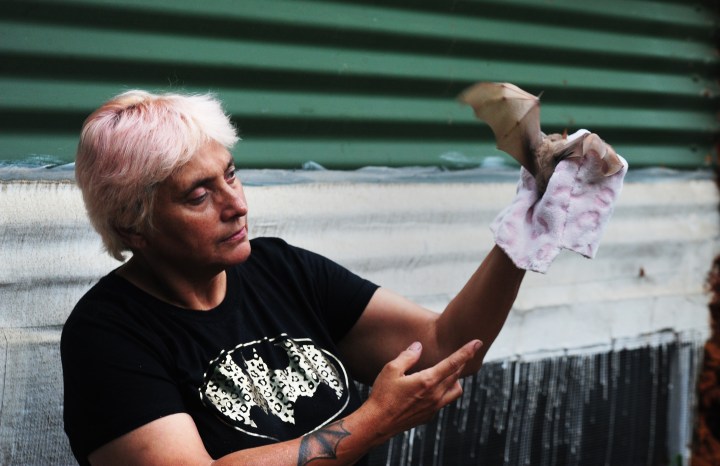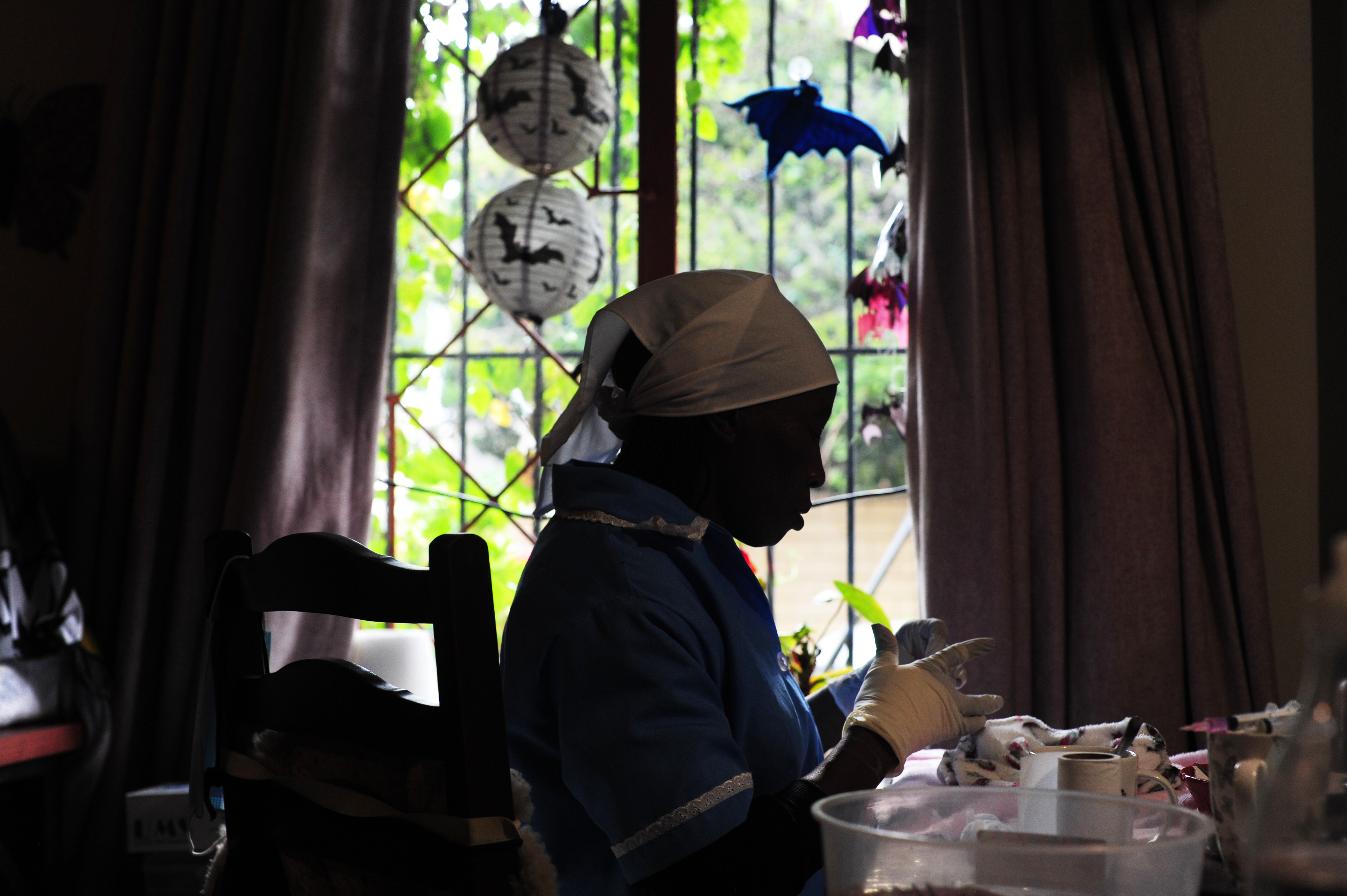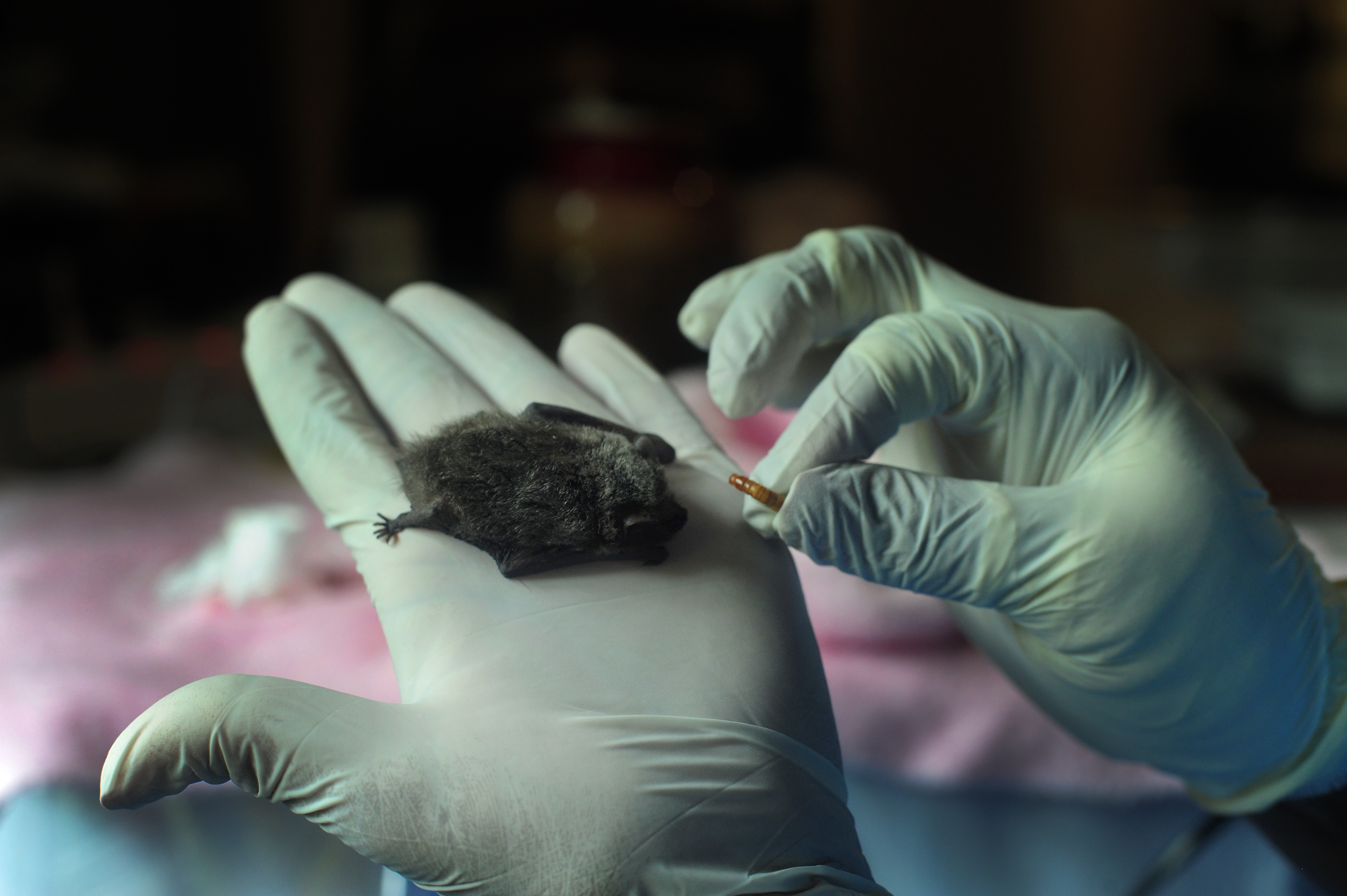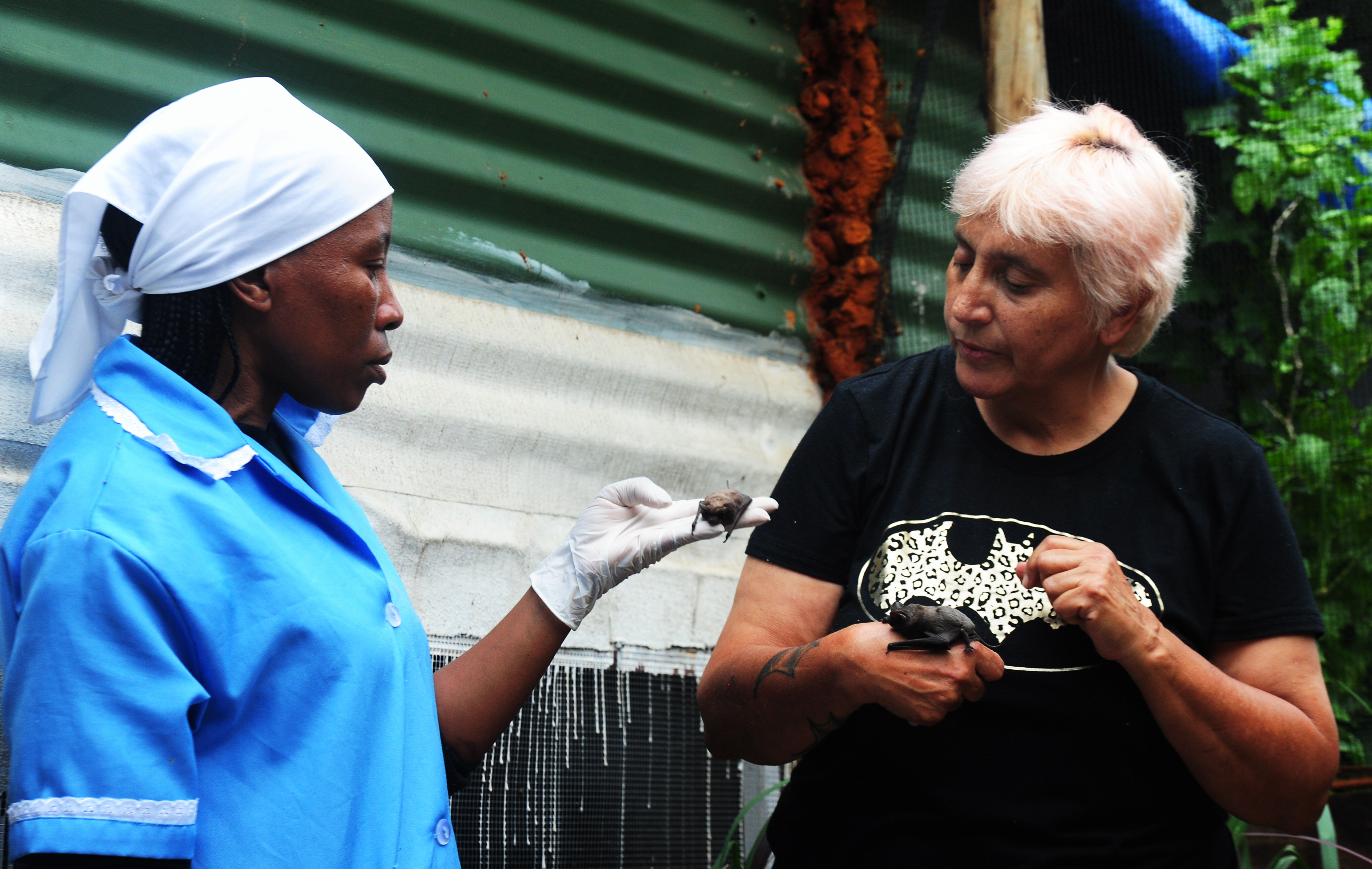WILDLIFE RESCUE
‘Batwomen’ heroines swoop in to save misunderstood creatures of the night

Two volunteers, who don’t mind being called batty, are working tirelessly to give injured bats a new lease of life. The animals are under increasing threat of habitat loss and human encroachment.
Gridah Chego pinches off the heads of worms — it’s an act of kindness.
Not for the worms, but for the injured bats she feeds by hand. The bat in her hand, a Cape serotine, is slightly larger than her thumb. The winged creature sucks the innards of the mealworms and, with each tiny slurp, becomes stronger so it can be released into the urban wilderness.
“Gridah spoils them — she’s like their bat mom,” says Sharron Reynolds, who turned parts of her East Rand home into a bat rescue centre over two decades ago. She was a keen caver and each outing into the dark terrain of caves left her a little more intrigued by the animals that call caves home.

Gridah Chego of BatMad GP. (Photo: Leon Sadiki)
“It became something of a natural progression, so I started studying up about bats [even the ones that don’t live in caves] and eventually I ended up doing courses on bats and bat rehabilitation,” she says. She had to get the correct permits and take precautions like getting rabies shots.
Word soon spread about Reynolds’ rescue and rehabilitation efforts and the bats have kept coming in ever since; worryingly in greater numbers over the past few years as there are very few rehabilitation centres to receive them.
Reynolds and Chego are now the amateur experts people turn to when their cats drag in bats, or when pups (baby bats) fall from their roosts in increasingly non-ideal nesting locations. Or when pups become disorientated when trying to dodge high rises, electric fences and endless mall developments.
Bats echolocate by emitting high-frequency sound pulses that are beyond human hearing through their mouths and noses. The echo from objects helps bats to determine the size, shape and texture of objects. However, congested, built-up and glassed environments become a tall order, even for their exquisite built-in navigation.

Bats are rehabilitated before being sent back into the wild. There has been an increase in the number of bats requiring rehabilitation. (Photo: Leon Sadiki)
For Chego, her bat journey started when she became Reynolds’ domestic worker nearly three years ago. (Reynolds counts the time in pupping seasons, not in years.) Chego learned the ropes quickly while watching Reynolds attend to sick or injured bats. Now she’s a full-time bat rescue assistant.
Chego laughs at Reynolds’ joke about babying the bats, but her eyes remain focused on the animal in her palm, the only mammal capable of true flight. There are about 1,400 known species of bat in the world and over 60 of them are found in South Africa.
“I am Pedi and when you grow up you hear stories about bats and that they bring bad luck, but then I came here. They are so tiny and so cute; you can say I love them,” Chego says.
Bats do unfairly get the horror movie and vampire-sucking rap. But as Chego can attest to, a close encounter shows that bats are shy, fluffy and fascinating. They are essential to the ecosystem as they control insect populations and help with fruit pollination.

Bats are increasingly being threatened by habitat loss as well as humans, who are encroaching on their environment. (Photo: Leon Sadiki)
The Reynolds’ dining room table has been turned into a feeding station where the new rescues are first assessed. On the table are heating pads (to warm up specially made fleece bat pouches) and syringes filled with kitten milk. Reynolds says that bats go into torpor (a mild state of hibernation) when temperatures drop, weather is bad, or when they are feeling too unwell to conserve energy. Getting new rescues warmed up is the first step to recovery. The kitten milk helps bats that need supplementary nutrition before they can attempt some mealworm innards.
A Betadine solution gives the bats’ mouths and bottoms an antiseptic once-over after each feed. It’s part of the protocol to keep any spread of parasites or diseases between the bats. Sexes are separated because the aim is to rehabilitate for release, not breed them.
Reynolds recently set up a Facebook page called BatMad GP to raise awareness, grow a volunteer network and raise much-needed funds. Part of her network includes Dr Shabeer Bhoola of the Terrace Road Veterinary Hospital in Edenvale. Bhoola works pro bono or at highly reduced rates for his bat services. He says: “If I can give them a chance then I just have to try. I see it as my responsibility to really give back to these wild animals.”

Bats are rehabilitated before being sent back into the wild. There has been an increase in the number of bats requiring rehabilitation. (Photo: Leon Sadiki)
He recently completed a hernia surgery on a bat that is now recovering at BatMad GP.
“A surgery I do today on a bat is as exciting as one I did 10 years ago, because they are tiny and finicky surgeries and also because there’s so much to learn about them,” says Bhoola.
Bhoola says lesser-seen urban wildlife should be introduced to school children. He bangs home the message of planting more indigenous plants and trees, ditching pesticides and chemicals to control rats and insects, putting up owl and bat boxes and being more aware and respectful that “this is their space, we are tenants and should respect their property”.
The tail-end of summer means that BatMad GP has high occupancy with about 50 bats. Reynolds’ home is filled with various -sized enclosures and fabric cages covered with blankets to accommodate the shy nocturnal animals. Some will spend winter there to get strong enough to be released in spring.
Occupants are mainly Cape serotine bats and a few yellow-bellied house bats. There’s also a fruit bat — which is unusual for Johannesburg. Reynolds says that once he passes his flight test, he will be released in the Pretoria area where there are known colonies.

Gridah Chego and Sharron Reynolds of BatMad GP. (Photo: Leon Sadiki)
Meanwhile Chego “teaches” the bats to fly in the “flight tunnels”, which are enclosures built in the garden. Chego urges them not to stop to rest. Once a bat can make it the length of the tunnel, they are deemed ready for release. “It’s always bittersweet for me to let them go. I always ask if we’ve done enough. But it’s something special to have given them a chance and to see a bat fly off again,” Reynolds says. DM168
Visit BatMad GP’s Facebook page for upcoming bat walks, updates on rescue bat recoveries and all things batty.
This story first appeared in our weekly Daily Maverick 168 newspaper which is available for R25 at Pick n Pay, Exclusive Books and airport bookstores. For your nearest stockist, please click here.






















 Become an Insider
Become an Insider
Comments - Please login in order to comment.